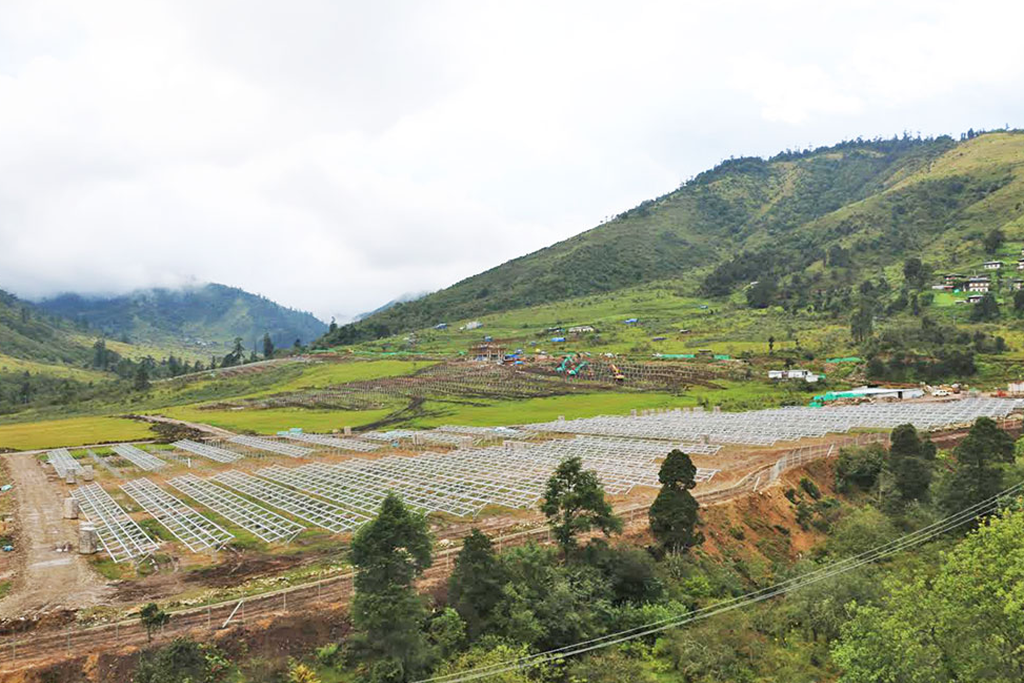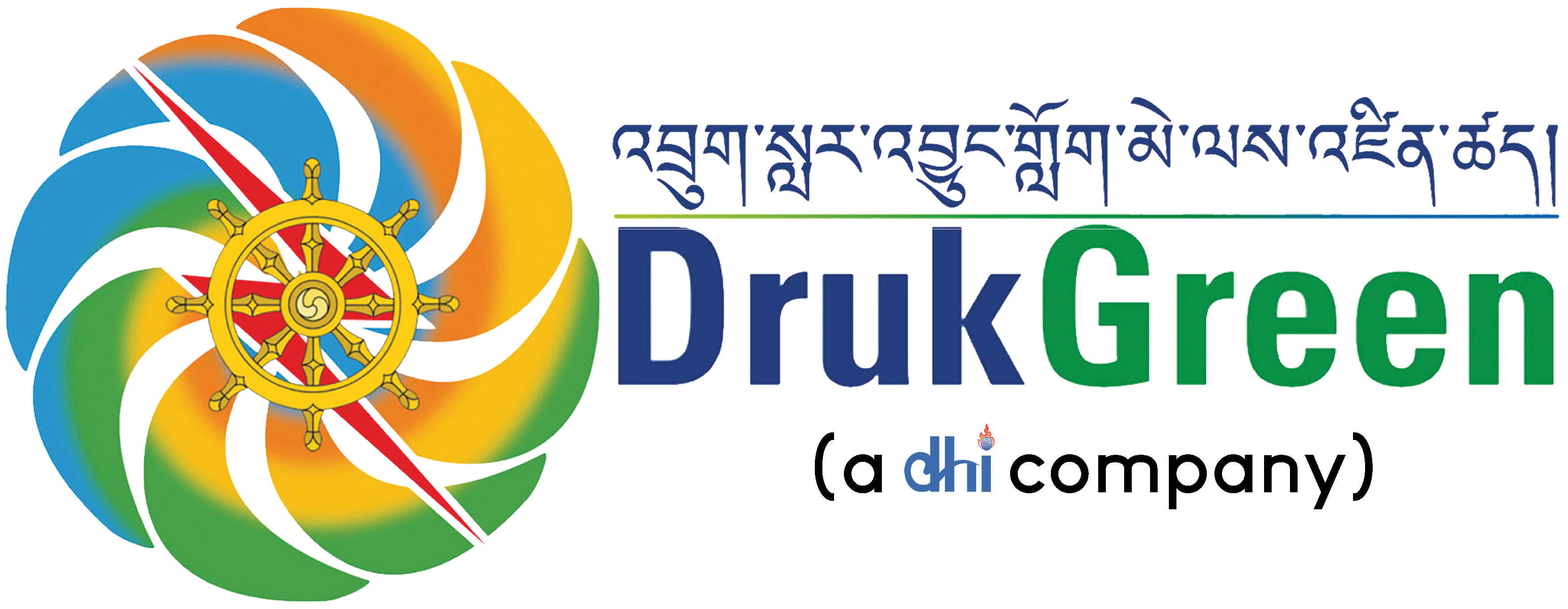
Kuensel | Yangyel Lhaden | August 30, 2024
The country’s first utility-scale solar farm in Sephu, Wangdue, initially planned at 17.38 megawatts (MW), has increased its capacity to 22.38 MW.
The project is divided into two phases. The first phase, which involves constructing 17.38 MW, is scheduled for completion by March of next year. The additional 5 MW, part of the second phase, will be completed by September 2024. All the energy generated from the solar farm will be integrated into the national grid.
“Initially, the project was designed to use about 65 acres in Yongtru village but we were able to procure higher-wattage solar panels, significantly reducing both cost and area requirements,” Site Engineer Keshab Dhakal said. “We had money and land left, which is why we can now construct an additional 5 MW.”
The site for this solar project spans state land, previously used as pasture for grazing cattle in Yongtru and Longmaed villages. Initially planned to use about 65 acres, the project now occupies only 44 acres for the first phase and 19 acres for the second phase, leaving two acres from the original estimate.
The project is funded by the Asian Development Bank (ADB), which has contributed USD 10 million in loans and USD 8.26 million in grants. The government has also invested USD 0.99 million.
“The energy generated from this solar farm is primarily intended to complement hydropower during the lean season, reducing Bhutan’s reliance on energy imports from India,” ADB Project Officer Sonam Zam said. “The country has significant potential to harness solar energy, and this solar farm marks the first step toward diversifying energy sources.”
Despite Bhutan’s main energy source being hydropower, the country imports electricity during the winter and lean seasons. From December 2023 to May 13, 2024, Bhutan imported electricity worth Nu 6.07 billion, a significant increase from Nu 1.75 billion in the same period the previous year. Meanwhile, hydroelectricity exports have been declining, from Nu 24.2 billion in 2021 to Nu 16.67 billion last year.
The government has set ambitious goals to generate 500 MW of solar energy by 2025 and 1,000 MW by 2030.
According to the Renewable Energy Management Master Plan 2016, Bhutan has the potential to generate 12 gigawatts of solar power and 760 MW of wind energy.
The first phase of the Sephu solar farm is expected to produce 25 million units of energy, enough to power 3,476 households, assuming an average urban household consumes five kilowatts of energy.
In addition, this phase could reduce carbon dioxide emissions by 24,495.5 tonnes if the generated energy is exported.
“We are yet to work out energy generation and reduction of carbon dioxide from the additional five MW,” Keshab Dhakal said. For the 22 households affected by the project in Yongtru and Longmaed, the project has blacktopped about two-kilometre farm road. “We are engaging with the community to understand their current needs. We are making holistic arrangements with the public to ensure they are least affected,” Keshab Dhakal said.
